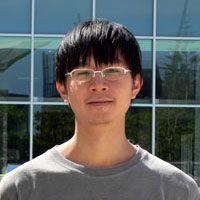
A Florida State University physicist will play a role in the building of a new space telescope, formally approved by NASA last week.
Teams of astrophysicists and engineers are set to begin work on the building of the Wide Field Infrared Survey Telescope (WFIRST), which is scheduled to be launched in the mid-2020s. The 2.4 meter telescope will have a field of view 100 times bigger than the Hubble Space Telescope and will survey large regions of space to help scientists answer some of the most fundamental questions about our universe.
Florida State Assistant Professor of Physics Eric Hsiao is part of a team that will use this new telescope for supernova observations and to further understand the nature of dark energy.
By carefully mapping the expansion history of the universe using supernovae, scientists arrived at a completely unexpected conclusion in the late 1990s that the expansion of the universe is currently speeding up. The unknown cause, aptly named dark energy, makes up more than two-thirds of the content of the universe.

“WFIRST will be our best shot at revealing the true identity of dark energy, which is one of the greatest mysteries in contemporary physics,” Hsiao said.
The telescope will be so versatile that it is expected to house several dark energy experiments, as well as a survey of planets beyond our solar system. It also will be equipped with a variety of instruments, including one called a coronagraph, which is designed to block the glare of individual stars and thus allow scientists to directly image planets in other solar systems.
The supernovae team is led by 2011 Nobel Prize winner Saul Perlmutter, a University of California Berkeley lab astrophysicist, and includes scientists from Carnegie Institution for Science, California Institute of Technology, Harvard University, Las Cumbres Observatory Global Telescope Network, NASA Goddard Space Flight Center, Space Telescope Science Institute, Texas A&M University, University of Chicago, University of Pennsylvania, University of Pittsburgh, University of Texas – Austin, University of Washington and Yale University.




